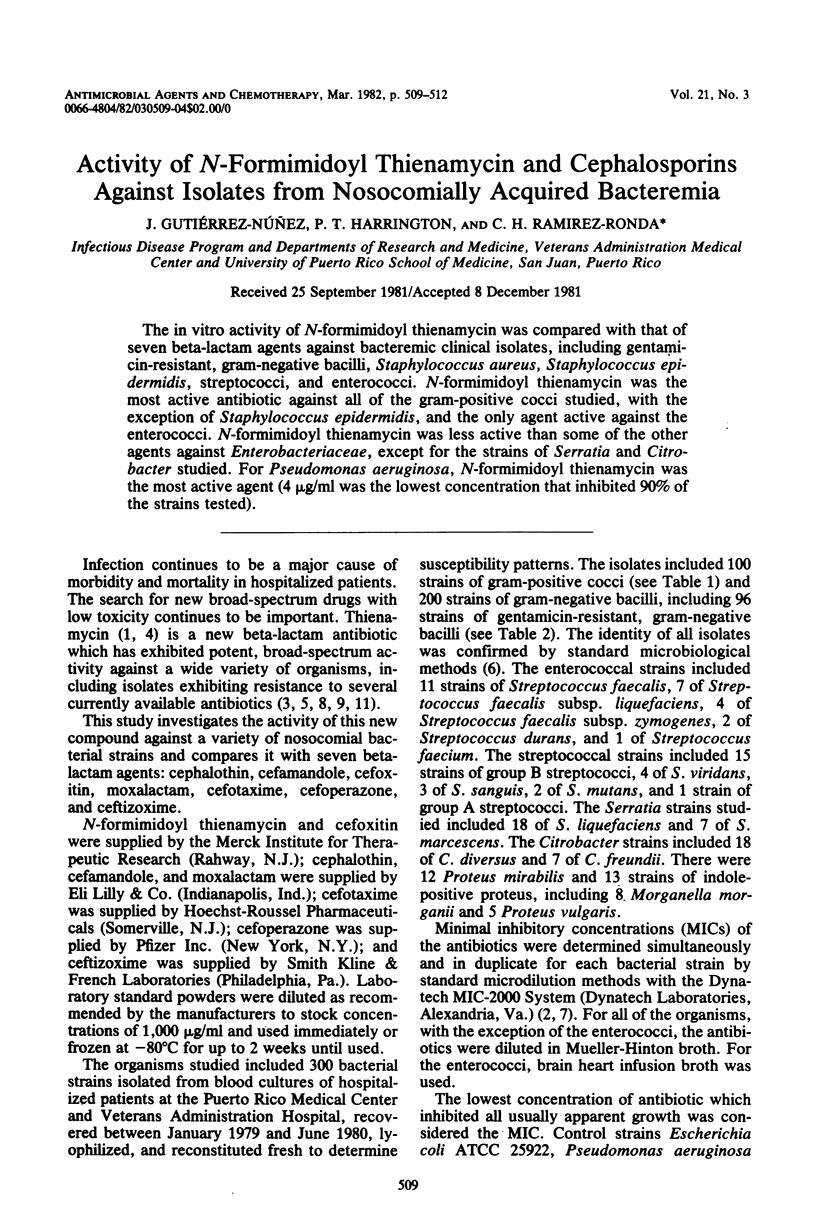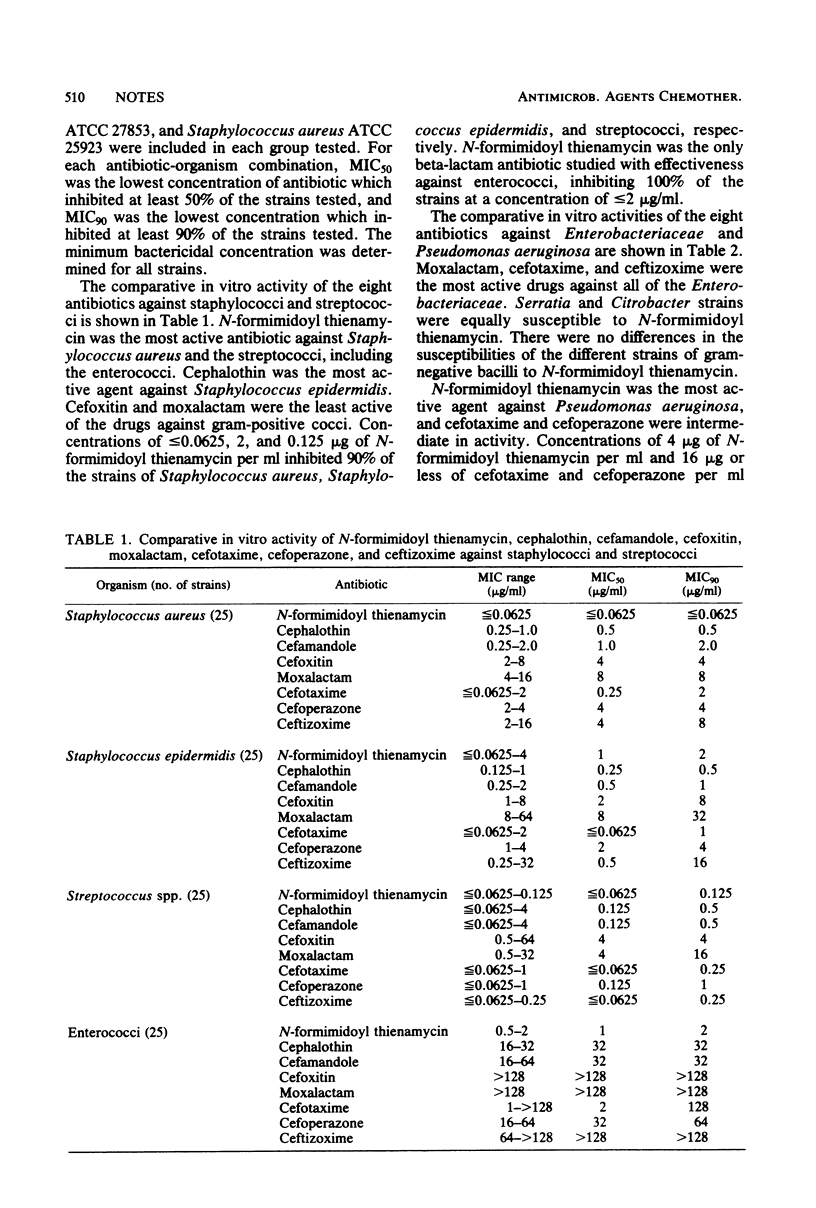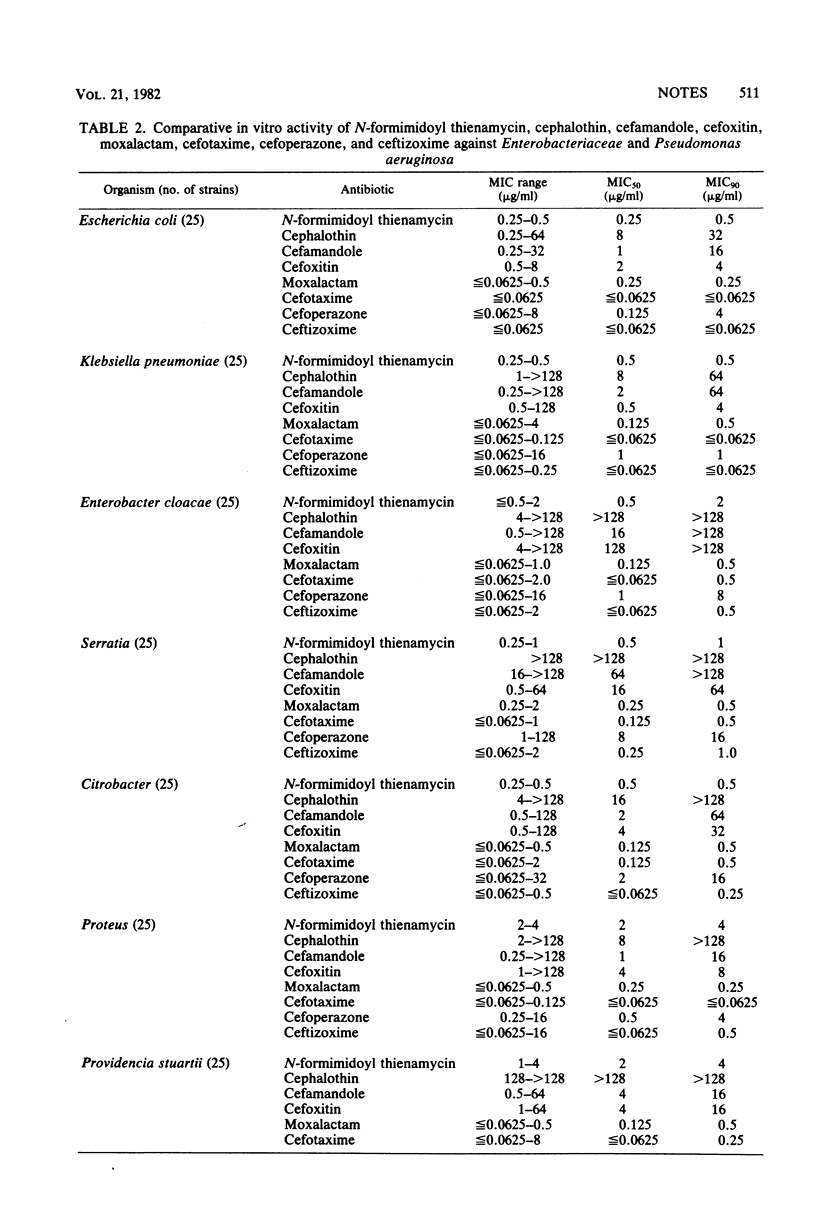Abstract
The in vitro activity of N-formimidoyl thienamycin was compared with that of seven beta-lactam agents against bacteremic clinical isolates, including gentamicin-resistant, gram-negative bacilli, Staphylococcus aureus, Staphylococcus epidermidis, streptococci, and enterococci. N-formimidoyl thienamycin was the most active antibiotic against all of the gram-positive cocci studied, with the exception of Staphylococcus epidermidis, and the only agent active against the enterococci. N-formimidoyl thienamycin was less active than some of the other agents against Enterobacteriaceae, except for the strains of Serratia and Citrobacter studied. For Pseudomonas aeruginosa, N-formimidoyl thienamycin was the most active agent (4 micrograms/ml was the lowest concentration that inhibited 90% of the strains tested).
Full text
PDF



Selected References
These references are in PubMed. This may not be the complete list of references from this article.
- Horadam V. W., Smilack J. D., Montgomery C. L., Werringloer J. In vitro activity of N-formimidoyl thienamycin (MK0787), a crystalline derivative of thienamycin. Antimicrob Agents Chemother. 1980 Oct;18(4):557–561. doi: 10.1128/aac.18.4.557. [DOI] [PMC free article] [PubMed] [Google Scholar]
- Kropp H., Sundelof J. G., Kahan J. S., Kahan F. M., Birnbaum J. MK0787 (N-formimidoyl thienamycin): evaluation of in vitro and in vivo activities. Antimicrob Agents Chemother. 1980 Jun;17(6):993–1000. doi: 10.1128/aac.17.6.993. [DOI] [PMC free article] [PubMed] [Google Scholar]
- McMaster P. R., Robertson E. A., Witebsky F. G., MacLowry J. D. Evaluation of a dispensing instrument (Dynatech MIC-2000) for preparing microtiter antibiotic plates and testing their potency during storage. Antimicrob Agents Chemother. 1978 May;13(5):842–844. doi: 10.1128/aac.13.5.842. [DOI] [PMC free article] [PubMed] [Google Scholar]
- Tally F. P., Jacobus N. V., Gorbach S. L. In vitro activity of N-formimidoyl thienamycin (MK0787). Antimicrob Agents Chemother. 1980 Oct;18(4):642–644. doi: 10.1128/aac.18.4.642. [DOI] [PMC free article] [PubMed] [Google Scholar]
- Tally F. P., Jacobus N. V., Gorbach S. L. In vitro activity of thienamycin. Antimicrob Agents Chemother. 1978 Sep;14(3):436–438. doi: 10.1128/aac.14.3.436. [DOI] [PMC free article] [PubMed] [Google Scholar]
- Verbist L., Verhaegen J. In vitro activity of N-formimidoyl thienamycin in comparison with cefotaxime, moxalactam, and ceftazidime. Antimicrob Agents Chemother. 1981 Mar;19(3):402–406. doi: 10.1128/aac.19.3.402. [DOI] [PMC free article] [PubMed] [Google Scholar]
- Weaver S. S., Bodey G. P., LeBlanc B. M. Thienamycin: new beta-lactam antibiotic with potent broad-spectrum activity. Antimicrob Agents Chemother. 1979 Apr;15(4):518–521. doi: 10.1128/aac.15.4.518. [DOI] [PMC free article] [PubMed] [Google Scholar]


